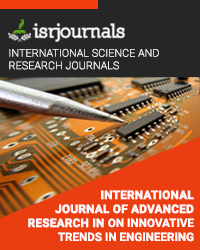advanced electric vehicle system using choppers
Kartheeswaran,kirubasankar,karthikeyaen
Published in International Journal of Advanced Research in Electrical and Electronics Engineering
ISSN: 2321-4775 Impact Factor:1.6 Volume:3 Issue:1 Year: 26 June,2014 Pages:79-92

Abstract
Batteries are the primary energy-storage devices in ground vehicles. Now days battery fed electric drives are commonly being used for electric vehicles applications, due to various advantages, such as: nearly zero emission, guaranteed load leveling, good transient operation and energy recovery during braking operation. To fulfill these requirements converters with bidirectional power flow capabilities are required to connect the accumulator (battery) to the dc link of the motor drive system. Battery fed electric vehicles (BFEVs) is required to function in three different modes namely: acceleration mode, normal (steady-state) mode and braking (regenerative) mode. During acceleration and normal modes the power flow is from battery to motor whereas during braking or regenerative mode the kinetic energy of the motor is converted into electrical energy and fed back to battery. The DC-DC converter is required to perform mainly two functions: first to match the battery voltage to the motor rated voltage and second to control the power flow under steady-state and transient conditions, so that the drive performance is as per the requirement. In the present work closed loop operation of bi-directional dc-dc converter feeding a dc motor and its energy recovery due to regenerative braking has been demonstrated. The characteristics of battery operated electric vehicle under different drive condition are also presented. The effectiveness of the system is verified through the simulations using Simulink/ MATLAB 7.6.0 (R2008a) package.
Kewords
Bi-directional dc-dc converter, separately excited dc motor, Battery.
Reference
Jain P.K., Kang W., Soin H., Xi Y., 2002 Analysis and design consideration of a load and line independent Zero voltage switching Full bridge DC/DC Converter topology, IEEE Transaction on Power Electronics, Vol.17, No.5, September. pp 649-657. Yu W., Lai J.-S., 2008. Ultra High Efficiency Bidirectional DC-DC Converter With multi frequency pulse width modulation APEC 2008,pp 1079-1084. Zhang J., Lai J.-S., Kim R.-Y., Wensong Yu, 2007. High power density design of a soft-switching high-power bidirectional dc-dc converter, IEEE Transactions on power electronics, Vol.22, No.4, pp 1145-1153, July. Zhang Y., Sen P.C., 2003. A new soft switching technique for buck, boost, and buck-boost converters, IEEE transactions on Industry Applications, Vol. 39. No.6, November/December, pp. 1775-1782. Zhang J., Lai J.-S., Yu W., 2008. bidirectional dc-dc converter modeling and unified controller with digital implementation, Applied Power Electronics Conference and Exposition, APEC 2008, pp.1747-1753, Feb. S. Williamson, M. Lukic, and A. Emadi, “Comprehensive drive train efficiencyanalysisofhybridelectricandfuel cell vehicles based on motor- controller efficiency modeling,” IEEE Trans. Power Electron., vol. 21, no. 3, pp. 730–740, May 2006. A. Emadi, S. Williamson, and A. Khaligh, “Power electronics intensive solutions for advanced electric, hybrid electric, and fuel cell vehicular power systems,” IEEE Trans. Power Electron., vol. 21, no. 3, pp. 567– 577, May 2006. A. Emadi, M. Ehsani, and J. Miller, “Advanced silicon rich automotive electrical power systems,” in Proc. 18th Digit. Avionics Syst. Conf., St Louis, MO, Oct. 24–29, 1999, vol. 2, pp. 8.B.1-1–8.B.1-8. J. Wang, F. Peng, J. Anderson, A. Joseph, and R. Buffenbarger, “Low cost fuel cell converter system for residential power generation,” IEEE Trans. Power Electron., vol. 19, no. 5, pp. 1315–1322, Sep. 2004. K. Moriya, H. Nakai, Y. Inaguma, H. Ohtani, and S. Sasaki, “A novel multi-functional converter system equipped with input voltage regulation and current ripple suppression,” in Conf. Rec. 2005 Ind. Appl. Conf. 40th IAS Annu. Meeting, Oct. 2–6, vol. 3, pp. 1636–1642.

